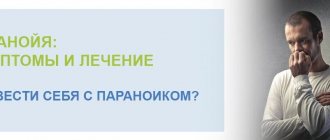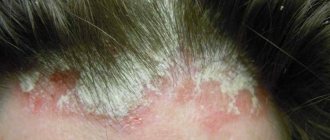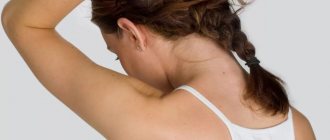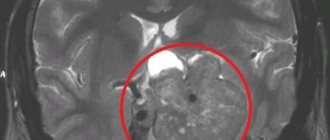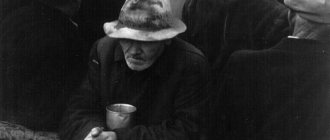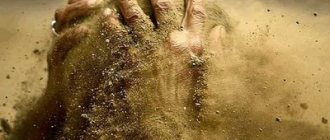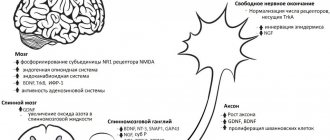The term trichotillomania comes from the Greek words trichos (hair), tillo (pulling out), mania (attraction). This is an impulsive mental disorder, expressed in an irresistible urge to pull out hair in different parts of the body. It was first described in 1889 by the French dermatologist Allopo F.A.
Process Features
The main purpose of depilation with tweezers is to remove hair from the follicles, which will stop their growth forever. The first few sessions give inconsistent results. However, over time, the hairs in the frequently treated area thin out, become thin and light, and then stop growing completely. For this reason, you should not abandon the procedure, giving preference to a less labor-intensive method. Using tweezers, you can remove those hairs that cannot be removed during other procedures, such as shaving or sugaring.
When buying tweezers for work, you need to pay attention to its shape:
- Rounded. Such a tool is considered the safest due to the absence of the risk of injury. However, not all hairs can be captured with rounded tweezers.
- Beveled. This option is also safe and suitable for use both in the clinic and at home. A beveled tool is more effective than a rounded one.
- Spicy. With its help you can capture even the shortest hairs. The disadvantage of the tool is the high risk of injury.
- Straight. The least convenient tweezers for removing hair at home.
The photo shows three types of tweezers: with straight, beveled and pointed edges
Soil for the development of the disease
Trichotillomania is provoked by various reasons:
- Scientists are conducting research to confirm the genetic nature of the disease. It was found that the same gene, SLITKR1, was damaged in a number of patients.
- Trichotillomania becomes a manifestation of a number of other mental disorders - schizophrenia, depression, neurosis, dementia. It is a symptom of bipolar affective disorder. In most cases, pathological hair pulling is a compulsive action within the framework of OCD - obsessive-compulsive disorder.
- The disease provokes organic damage to the brain.
- Lack of serotonin becomes a provocateur of the disorder.
- Hormonal surges can rightfully claim a role in the occurrence of trichotillomania. The theory is confirmed by the fact that the disease flourishes in adolescence.
- The disorder often develops in people with a special personality type – suspicious, scrupulous, sensitive.
- Trichotillomania can be triggered by severe or prolonged chronic stress. The strongest emotional tension that arises during stress requires an outlet and finds it in such a perverted form.
Advantages and disadvantages
Advantages of using tweezers:
Versatility. The method is suitable for removing soft and hard hair from 2 mm.
Minimum number of contraindications.
Low cost of the procedure. Having bought tweezers once, a girl can use them for many years.
The ability to permanently get rid of unwanted hair. The effect of the first procedures lasts for two weeks. For some girls it lasts no more than a week. However, repeated depilation will damage the hair follicle and prevent hair from growing.
The disadvantages of the procedure include:
Traumaticity . Careless movement with tweezers can damage the skin. In some cases, minor bleeding may occur.
Inability to remove hairs shorter than 2 mm and vellus hairs . Such hairs are difficult to grab with tweezers.
Inflammatory processes in the treated area . Inflammations are possible if hygiene requirements are not followed. But even with proper treatment, slight swelling and red dots remain.
What are the dangers of trichotillomania?
The consequences of the disease include physical and social impairment.
Among the physical consequences, it is worth highlighting the damage to the gastrointestinal tract that occurs when eating hair. During the process of trichophagia, a bezoar is formed in the stomach - a hairball. It causes a lot of inconvenience - from stomach pain to indigestion. The extreme of this disorder is called “Rapunzel syndrome” - a condition where a strand of hair extends from the stomach into the intestines.
Rapunzel syndrome is an extremely dangerous phenomenon that threatens the patient with death. A case was described in which a hairball weighing 4 kg was removed from a girl’s gastrointestinal tract.
In addition, eating hair affects the condition of tooth enamel.
Skin that is traumatized at the site where the hair follicle is pulled out can become infected. In addition, if you systematically remove hair in a certain area over a certain period of time, it grows more slowly. On the head, in the area of eyelashes, eyebrows, complete baldness becomes an aesthetic problem.
The absence of eyelashes provokes vision problems:
- inflammation of the eyelids, mucous membranes of the eyes;
- conjunctivitis;
- blepharitis;
- furunculosis;
- microtrauma of the eye.
Socially, the disease causes no less problems than physically. Patients realize the absurdity of their condition, hide their pathological tendencies and unattractive consequences. They try to fight, but it doesn’t work out well alone.
It is worth noting that society is poorly aware of the problem of trichotillomania. Therefore, an unevenly bald person without eyebrows and eyelashes involuntarily causes bewilderment and sarcasm on the part of others.
Self-flagellation and public bullying make trichotillomaniacs depressed and force them to isolate themselves from their surroundings, which threatens complete social isolation, loss of friendly contacts, and loss of self.
Skin preparation
Before starting the procedure, it is necessary to clean the desired area of skin from possible contaminants. If the intimate area is to undergo the procedure, it is advisable to take a warm shower, but not earlier than 1 hour before the procedure.
We will remove the hair of our programmer, who voluntarily expressed a desire to help 
To relieve pain from plucking, you can use a special cooling gel or Emla cream, which is applied 20-30 minutes before work and then washed off after a few minutes. Before the session begins, the skin is treated with an antiseptic. The tweezers also need to be treated with an antiseptic, after washing them with soap and running water.
You can clean the tweezers before the procedure with soap.
A week before the procedure, the area of skin selected for hair removal can be shaved, since the hairs that grow back after this procedure are thicker. They are easier to grab with tweezers. You should not shave your facial hair.
Also, before the procedure, tweezers can be treated with an antiseptic chlorhexidine
How it manifests itself
The disease manifests itself suddenly. The patient begins to pull out hair on any part of the body:
- more often - on the head;
- brows;
- eyelashes;
- pubis;
- armpits;
- stomach;
- breast.
As patients themselves note, the desire to pull out hair is so strong that the impulse cannot be drowned out. After completing the action, a feeling of pleasant relaxation appears.
For a trichotillomaniac, hair pulling is a ritual. The strand is wound around the finger in a special way. If the hair is short, it is clamped in a certain way.
The boy fixed the hair bun between his index and middle fingers. The big one pressed it against the index finger, then, using a scrolling method, pulled it out hair by hair. According to the mother, the entire scalp was removed in this way. Afterwards the baby switched to eyebrows and eyelashes.
After the ritual, the person must make sure that the hair is removed. The patient passes the strand between the teeth and bites off the onion.
Typical is trichophagia - eating torn strands. It happens that the patient even eats other people's hair. The phenomenon was noticed back in the 18th century: a French doctor discovered a hairball in the gastrointestinal tract in a 16-year-old boy.
In addition to trichophagia, trichotillomania is accompanied by nail biting and skin trauma. Patients pull out hair from animals and pull threads out of fabric.
Another type of disorder is trichothema mania : a person “thins out” gray hair, believing that in this way he relieves itching.
Pulling out hair strands can be total, to the point of complete baldness, or zonal. Bald skin has a normal appearance with clearly defined follicular ostia.
A trichotillomaniac performs the ritual consciously and unconsciously. Unconsciously, the process occurs in a state of boredom, loneliness, while performing everyday activities - talking on the phone, watching TV, reading a book. Unconscious impulses are born both in a calm state and during a period of peak tension. After complete auto-depilation, a person becomes bewildered when those present tell him about what he did, since he does not remember how he performed the ritual.
Carrying out the procedure consciously, the patient carefully prepares for it. Prepares instruments, tries to retire.
People with trichotillomania carefully hide the areas of forced baldness. To do this, they use improvised methods. They wear hats, scarves, and wigs. Eyebrow tattooing and eyelash extensions.
Execution technique
The hair must be grabbed as close to the root as possible and pulled out in the direction of its growth. Do not pull on the tip or middle. This way the hair can be broken. Its root will remain under the skin. The hair will grow back and may become ingrown. Under no circumstances should you pull sharply, otherwise the hair may break off! Excessively sharpened tweezers can lead to biting the hair, which is also not desirable.
In the image you can see step by step how to remove hair correctly. Image is clickable
Glossary of terms
In this section we have collected all the terms that you might encounter in this article. Gradually, we will collect from these explanations a real dictionary of a narcologist-psychiatrist. If some concepts remain unclear to you, leave your comments under the articles on our site. We will definitely help you figure it out.
Rapunzel syndrome
– a situation when a hairball is in a person’s stomach, and a long “tail” stretches into the intestines. A direct consequence of the desire to eat hair.
Trichotillomania
– a person’s pathological need to continually pull out hair on the head or other parts of one’s body. Trichotillomania occurs approximately twice as often in women as in men. Considered a mental disorder, often associated with stress.
Trichophrenia
– a mental disorder characterized by a particularly reverent attitude towards one’s own hair. Most psychiatrists classify trichophrenia as a type of schizophrenia.
Aftercare
After the session, the skin should be treated with an antiseptic, and then with lotion or anti-inflammatory ointment or cream, for example, Panthenol, Synthomycin or Levomekol.
After hair removal, you can use Levomekol, it is relatively inexpensive and very effective
To avoid bleeding, you can use a cold compress to constrict the capillaries. Decoctions of medicinal plants (celandine, chamomile) are suitable for compresses.
Treatment of the hair removal site with Levomekol
For several days after hair removal, it is not recommended to sunbathe, swim in the river (sea), or visit the solarium or sauna. It is allowed to take a cool or warm shower. However, you should not rub the treated area with a washcloth or scrub.
Hair loss
The hair problem that causes the most concern is definitely hair loss.
Practice shows that in the vast majority of cases, it is not so much the presence of already existing baldness, but the debilitating constant hair loss that is the source of neurosis and depression in both women and men. hair loss always equivalent to baldness (or scientifically speaking, alopecia). No, not always.
Let's look at the history of the origin of the term itself - alopecia. And now we need to remember about the fox, this is very important for further understanding of many hair problems. So, the Greek word alopex means fox, with a hint of fox “scab”, molting. But even in the animal that gave its name to this disease, hair loss is temporary, seasonal, not leading to permanent hair loss, but on the contrary, a very positive phenomenon in the life of mammals. So, for a fox this is a physiological phenomenon.
What is the mechanism of this alopecia?
For its development, the following condition is necessary - it is important that the majority of hair in animals prone to molting grows synchronously, being in the same phase of its development. Consequently, their change occurs simultaneously. One can only imagine what would happen if a person’s hair also grew synchronously.
Their loss would not develop as often as in foxes, not 2 times a year, but once every 2-5 years, depending on the individual duration of the hair growth phase, determined primarily by a combination of hormonal and genetic factors. But human evolution has decreed that our hair grows asynchronously, each in its own phase, which means the process of hair change is asynchronous, hair falls out one by one and almost imperceptibly.
Questions about hair loss
Doctors are often asked an “uncomfortable” question at appointments: how much hair should I normally lose per day?
Why is this question uncomfortable? First of all, because each person has his own rate of hair loss, which depends on the individual amount of hair on the head. And if a person with red hair has a decent thickness, it is compensated by a minimal amount (50,000-60,000), then a natural blonde with very thin hair has a different compensation and the amount of hair can be, say, 150,000.
Thus, it is clear that the rate of hair loss may differ by 2-3 times, depending on the amount of hair. Now let's try to calculate this norm ourselves. For example, let's take a citizen who has 70,000 hairs. Of these, 15% is in the hair loss phase (it is a well-known truth that every 6th-7th hair in a person is in the telogen phase, i.e. hair loss).
And this hair falls out within 100 days (this is the duration of the hair loss phase). Now we count. 15% of 70,000 is 10,500 hairs that are lost. These 10,500 hairs fall out within 100 days, therefore, every day a citizen will lose 105 hairs, and this will be his norm. Many people, when faced with intense hair loss , begin to look very carefully at the shape of the lost hair and realize with horror that the hair falls out along with the bulb - a thickening of white color and a round shape at the base of the hair.
And this discovery increases fear - if the hair falls out with the bulb, it means it will not grow back! In fact, hair loss cannot happen any other way—the hair follicle is an integral part of the hair.
| Hair root in growth phase: | And so - in the phase of loss |
But the hair was in its own hair follicle until it fell out. - the hair follicle, which remains in place with all the structures necessary to form the next hair. And, as a rule, such a mechanism, worked out evolutionarily, is very reliable.
The amount of hair growing corresponds to the amount of hair falling out. Below we will focus on those rare problems when this mechanism fails.
Now let's look at the structure of the hair shaft from a practical point of view, so that the choice of products for the care and restoration of damaged hair is made consciously, based on knowledge, and not on appearance, color or smell.
|
The visible part of the hair protruding above the surface of the skin is called the shaft. The middle of the rod is the core (2), the structure and functions of which are of no practical interest to us. The main mass of the rod is the cortical layer (1). It consists of amino acids that form keratin. In addition, the cortex contains pigment granules that give a particular color to the hair.
On the outside, the cortical layer is covered with cuticle (3) - a thin colorless shell consisting of scales. Its purpose is to protect hair from external aggressive influences. Thanks to the ordered arrangement of keratin scales, hair reflects light, which means it shines.
Between the cortex and the cuticle, as well as between the scales of the cuticle, there are lipids, i.e. fats that are necessary to give hair elasticity, shine, strength and protection from the damaging effects of moisture. And the most important of the lipids are ceramides. Now it should be clear that when choosing cosmetics intended to restore damaged hair structure, the best products will not be those that cost from 50 USD. per jar, and those that contain the main structural components of hair.
Thus, if when purchasing a product for restoring hair damaged due to coloring, perm, excess ultraviolet radiation, frequent use of a hair dryer, frequent hair washing... you will find that the components contain keratin, hydrolyzed proteins, such as silk proteins, amino acids, ceramides, vegetable oils (peach, avocado, coconut, jojoba, orchids, shea), emulsions with phospholipids, lactic acid, chitosan, unsaturated fatty acids (linoleic, linolenic), and such modern components as silicones (dimethicone, cyclomethicone), you can be sure that such a drug is worthy of attention and will cope with its function.
If the hair shafts are extremely dry, then glycerin, sorbitol, urea, and polysaccharides will be useful ingredients that retain moisture. To consolidate the skill, look at the products on your bathroom shelf and evaluate how capable they are of restoring damaged hair.
If the air in the room is dry (and it is useful to have a hygrometer in the room), it makes sense to use a household humidifier or have an aquarium. In winter, the indoor air should be at a minimum comfortable temperature.
The next common question is how often should you wash your hair?
Thanks to numerous publications in the press, most people are confident that frequent washing of hair and hair is excessively harmful, and the chemical base of shampoos is so aggressive that it can cause serious problems. Not everything is clear on this issue.
Let's consider the first version - washing your hair with shampoos has no restrictions.
What arguments do we have in defense of this version? A large number of people wash their bodies with detergents daily, or even 2 times a day - do they complain about body hair loss? Does frequent washing cause the skin on the body to become “greasy”, as is often said about hair?
Let's figure out what is stronger - hair or skin? Hair consists of hard keratin, which is second only to teeth in strength, but skin is soft keratin. The difference between hair keratin and skin keratin is the high content of sulfur-containing amino acids that form strong double bonds. That. If anything suffers from frequent washing, it is primarily the skin. But the skin holds up.
Thus, it is an exaggeration to believe that many hair problems are associated with frequent shampooing. And if you wash your hair rarely, it will become greasy, toxic waste products will accumulate, microflora will multiply and all this will lead to inflammation, hair loss , unpleasant odor and unsightly appearance of the hair.
Let's consider the second version - washing your hair with synthetic detergents is harmful.
Arguments - frequent shampooing leads to washing away the protective lipid layer, which makes the hair unprotected. This can lead to brittleness, dryness, and hair loss. And washing off the protective mantle from the skin of the scalp can increase the manifestations of inflammatory processes, especially with a tendency to seborrhea (increased greasiness), because The protective properties of the lipid barrier when damaged are restored only after 48-72 hours.
Detergents that have an alkaline reaction have a particularly adverse effect on hair. Most shampoos are alkaline in nature. When alkali hits them, the scales of the hair cuticle “open up,” thereby allowing moisture to enter the hair. By the way, some consumers prefer the cheapest shampoos or soaps, including laundry soap.
Why do these products attract them more than more expensive and high-quality products?
One of the reasons is that, having a pronounced alkaline reaction, these products quickly rinse the hair “to the point of squeaking”; moisture penetrates into the hair through the opened scales, making the hair shafts swollen and voluminous. But you can’t expect such a “gift” from high-quality shampoos.
What should we do, consumers?
Taking into account the above, in order not to provoke hair loss, you should adhere to some rules:
- You should wash your hair as often as necessary for a comfortable feeling of cleanliness.
- The shampoo should be chosen according to the hair type, avoid “family” shampoos and “2 in 1” shampoos.
- Apply detergents only to the scalp, and wash the hair shafts with the flowing foam.
- The shampoo should not be kept on the head for more than 3 minutes, unless otherwise prescribed in the instructions. Rinse off the foam as thoroughly as possible with water whose temperature is close to body temperature. Then rinse your hair with cool water.
- It is important to apply a conditioner or mask to your hair after shampooing. These products have a slightly acidic reaction, which means they neutralize the negative effects of shampoos and help restore the protective lipid barrier.
- It is best if, after washing your hair, you train yourself to use not only a hair balm, but also a tonic for the scalp. Tonics (lotions, serums) are designed to restore skin balance, normalize the functioning of the sebaceous glands, usually prevent the development of dandruff and have an additional nutritional function for the hair follicles.
- Avoid rubbing with a towel, only blot
- If you wash your hair every day, take a “fasting day” on weekends by washing your hair with egg yolk mixed in warm water. Rinse your hair thoroughly with running water, then rinse it with water and lemon juice (or table vinegar). This rinse will replace the balm.
The next question is no less relevant: how harmful are dyes for hair?
Practical advice - if you are concerned about hair loss , but you need to dye, opt for dyes of the second type
There are three main types of hair dyes:
- Dyes of the first type - paint over the hair from above, without penetrating into the depths of the hair. The advantage of such dyes is that they are not capable of causing any significant harm to the hair. But these are unstable dyes that are washed off quite quickly, but they cannot cause hair loss.
- The second type of paint requires the use of a component such as hydrogen peroxide. Such dyes have an alkaline reaction, they open the cuticle scales and penetrate into the cortex, “sweeping away” the protective lipid barrier along the way (otherwise there is no way to penetrate into the depths of the hair, i.e. where the pigment is located). Hydrogen peroxide oxidizes dye molecules, which increase in size and become fixed to the pigment granules. Such dyes provide a stable color, but are not capable of radically changing the color of the hair, because they do not destroy their own pigment, but only paint over it. This type of dye can cause drying and brittle hair , although modern protective products can avoid such problems. As a rule, such dyes do not provoke hair loss .
- And finally, the third type of dye contains not only peroxide, but also ammonia, which allows the dye to penetrate into the hair and destroy its own color pigments. These paints are the most durable and allow you to get any colors. But, alas, ammonia is a rather aggressive component and can cause temporary toxic hair loss in the most sensitive people.
Continuation
Possible problems
Why do most people, when they cut a hair with a razor or break off the hair under the base soon after epilation, hair grows quickly and the hairs become stiffer and thicker?
Hair growth is a natural physiological process. Hair is a keratinized formation of the epidermis located in the pores, where the sebaceous glands are also located, and serves to remove secretions, the so-called sebum, through the lumen to the surface of the skin to soften and moisturize it, as well as the toxins it contains. The removal of sebum is a very important process, it is necessary so that the secretion does not accumulate in the pores and does not interfere with tissue respiration, and the accumulation of secretion serves as a good environment for the development of microbial flora and the subsequent occurrence of inflammation! Thus, the cells of the hair follicles begin to actively divide so that the hair can again emerge through the surface of the skin and continue to perform its main function.
It is worth noting that there are pores without hair; sweat glands are located there; their secretion is not so thick, so it does not need to be drained. However, even in such pores, outflow can be impaired if the pores are clogged from the outside with foreign particles, for example particles of powder or other loose makeup products, as well as when using too greasy creams, oils and improper cleansing of the skin.
Etiology of trichophagia:
Most psychiatrists agree that the reasons for the development of trichophagia may be, in particular:
- Deficiency of maternal love;
- Fear of being alone;
- Death of loved ones;
- Alcoholism and drug addiction;
- Depression;
- Inferiority complex.
As you have already noticed, there are all the prerequisites for the onset of the disease in childhood, including early childhood. And indeed, the tendency to the pathology in question really manifests itself quite early. Indirectly, children who twirl their hair around their fingers can be considered a “risk group” during experiences or moments of concentration.
Usually, children understand well that eating hair is bad, they try to hide their desire to do this from adults, and retire to indulge in trichophagia. Children deviate from relevant questions and hide the habit from parents and doctors.
Regarding character, such children have excellent communication skills, developed leadership qualities and good performance in school. Often, these children grow up in authoritarian families, where pedantry and adherence to clear rules are encouraged. Eating hair can be triggered by a feeling of discomfort and guilt when deviating from the algorithm of behavior set by strict parents.
Features of using the method for various areas
When working with different parts of the body, you need to take into account the sensitivity of the skin and the location of the area: the more accessible it is for depilation, the better the effect can be achieved. If the zone is inaccessible for some reason, you should use other methods.
Face
On the face, eyebrows are most often corrected. However, some women need to get rid of the mustache above their upper lip. It is necessary to remove unwanted hair gradually, over several sessions, to avoid the appearance of swelling and redness on the face.
Bikini area
Before plucking your hair, you need to steam your skin. It is recommended to use a scrub or washcloth soaked in warm water to lift the hairs. Such measures will help make the procedure less painful and free ingrown hairs. If the hairs in the bikini area are longer than 4-5 mm, they need to be shortened with scissors or a trimmer. For effective removal, the skin should be pulled with your fingers in the direction opposite to the growth of the hairs and the movement of the tweezers.
The procedure should not be carried out during menstruation, as the pain threshold is greatly reduced, which will increase the pain from manipulation.
You can remove hair with tweezers both in the classic and deep bikini areas. However, in the latter case, the use of tweezers should be replaced by other methods.
Axillary area
Tweezers are rarely used for the armpit, since plucking will have to be done in an awkward position. You can work in front of a mirror. But if possible, you should look directly at the vegetation, and not at its reflection. To do this, you need to turn your head in the right direction and bend it slightly. When you stay in this position for a long time, dizziness appears and your limbs become numb. For this reason, it is necessary to pause for 5-10 minutes.
Trigger
According to official data, about 5% of people worldwide suffer from trichotillomania. But this figure is inaccurate, since the lion's share of patients hide their addiction. People are able to hide their addiction for 20 years.
The majority of patients are women. More often, the disease debuts in childhood or adolescence, less often in the range of 20-30 years, and even less often after 40.
The development of the disease is based on the emerging feeling of tension and anxiety. The cause may be a guilt complex, fear, anger, anger and many other conditions that provoke a feeling of anxiety.
The skin where hair grows is well innervated thanks to a dense network of nerve fibers. This increases her sensitivity. A person who pulls out a hair feels pain. In this way, the patient switches attention from mental stress to physical sensations.
Self-inflicted pain acts as a way of self-punishment. Trichotillomaniac uses this method to relieve the stress that torments him. Endorphins, released under the influence of painful impulses, give a feeling of satisfaction, but only for a short time. Soon the feeling returns. The process is repeated.
There is an assumption that the disorder can also satisfy masochistic desires. Allegedly, the patient deliberately intensifies the pain in order to subsequently receive pleasure when the pain subsides. But this theory is just a guess.
Additional materials
Home test for hair loss
Run your fingers through your hair, pinch the hair between your fingers, pull out the strands, sliding along them. Don't pull out your hair! There should be no pain during traction. Count how many hairs you pulled out.
- If you have less than 6 hairs in your hand, congratulations! There's nothing wrong with your hair.
- If there are more than 6 hairs, hair falls out beyond normal.
Hair roots require attention and care. Before the test, it is advisable not to wash your hair for 5 days. The test can be repeated on different parts of the head to determine which areas are experiencing intense hair loss. If hair loss in the frontal-parietal zone is above normal, and in the back - within normal limits, then with a high degree of probability, androgenetic alopecia can be diagnosed.
List of primary diagnostic procedures for hair loss in women
- Blood test: general, hormones (DHEA sulfate, testosterone, androstenedione, prolactin, follicle-stimulating hormone, luteinizing hormone, antibodies to TPO, T4, TSH), iron, ferritin, TSH.
- Test for syphilis.
- Computer diagnostics of the scalp and hair (trichogram or phototrichogram). Computer diagnostics will allow you to determine the type of hair loss: under high magnification, the doctor looks at the condition of the follicles, the ratio of normal, vellus and thinning hair, and checks whether there is inflammation of the skin. The phototrichogram shows the growth rate, density, percentage of hair growing and falling out. In the Regeus laboratory you can get a trichogram for free:
- Additionally, in case of pathology of the hair shaft, it is necessary to conduct a spectral analysis of the hair for microelements.
Authors: Elizaveta Dubinskaya, Olga Fedina, Melanya Aidinyan
Provide your hair with complete natural nutrition
Even if now the hair loss is below the norm stated by experts, but before you did not notice hair loss at all, and other concerns have appeared (dullness, fragility, and so on), this is worth paying attention to. You can watch your hair for another month, take a photo of the parting and compare after a month. If the situation still worries you, after a month, start nourishing your hair with special products. Or - if you are very worried - start right away: serums based on natural ingredients definitely won’t hurt. If you notice hair loss that exceeds the norm, immediately start nourishing the roots. If possible, consult a trichologist. There is no - you have about two months to solve the problem yourself. About 70% of cases of hair loss are eliminated by sufficient proper and harmless nutrition of the roots. Even if the hair loss is caused by other reasons, they somehow interfere with the full access of the necessary substances to the hair root. Important! In recent decades, trichologists and cosmetologists have recommended treating hair loss with products based on minoxidil or its analogues. However, it turned out that minoxidil causes allergic reactions, pain in the heart area, and tachycardia. Therefore, to help your hair on your own, choose products based on harmless ingredients. Use the serum for 2-3 months and observe the results. The effect is noticeable after 3-4 weeks: you will see that the appearance of your hair will improve, the amount of hair falling out will begin to decrease. And after 8-10 weeks, new ones will actively grow.
